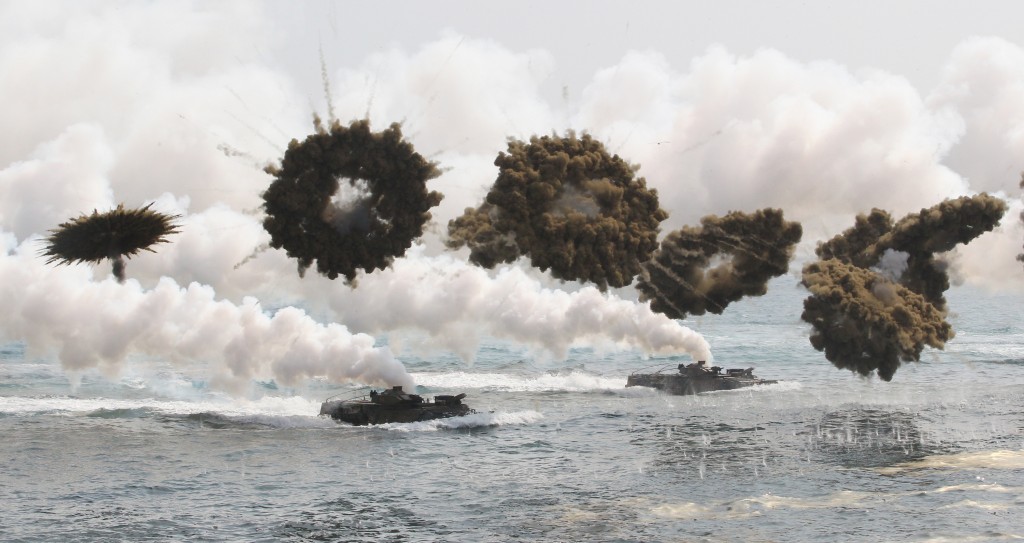- California Assembly OKs highest minimum wage in nation
- S. Korea unveils first graphic cigarette warnings
- US joins with South Korea, Japan in bid to deter North Korea
- LPGA golfer Chun In-gee finally back in action
- S. Korea won’t be top seed in final World Cup qualification round
- US men’s soccer misses 2nd straight Olympics
- US back on track in qualifying with 4-0 win over Guatemala
- High-intensity workout injuries spawn cottage industry
- CDC expands range of Zika mosquitoes into parts of Northeast
- Who knew? ‘The Walking Dead’ is helping families connect
[9news.com.au / AAP] Australian soldiers head for South Korea

South Korean marine LVT-7 landing craft sail to shores through smoke screens during the U.S.-South Korea joint military exercises called Ssangyong, part of the Foal Eagle military exercises, in Pohang, South Korea, Monday, March 31, 2014. South Korea said North Korea has announced plans to conduct live-fire drills near the rivals’ disputed western sea boundary. The planned drills Monday come after an increase in threatening rhetoric from Pyongyang and a series of rocket and ballistic missile launches in an apparent protest against the annual military exercises by Seoul and Washington.(AP Photo/Ahn Young-joon)
[9news.com.au / AAP] – Australian soldiers will head to South Korea next month for large scale amphibious landing exercises alongside Korean and US troops.
Around 150 Australian soldiers, including infantry, a joint fire team, combat engineers and medics will participate in the Exercise Ssang Yong, the largest training activity involving the Australian army and the Republic of Korea.
This annual event generally sparks a bellicose response from North Korea which regards this as a rehearsal for an invasion.












![일본 사도광산 [서경덕 교수 제공. 재판매 및 DB 금지]](http://www.koreatimesus.com/wp-content/uploads/2024/07/PYH2024072610800050400_P4-copy-120x134.jpg)


